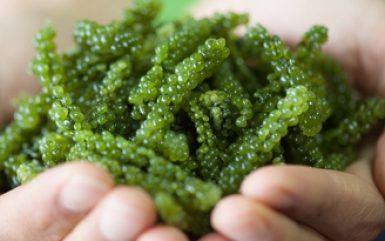
![]() The oceans of our world are the richest reservoir of living and nonliving resources. The living resources include the better known fish, shellfish and mollusks that serve as food as well as an unknown number of species of seaweeds, corals, invertebrates and micro organisms (bacteria, micro algae, etc) that can generate a wide variety of nutraceuticals, enzymes, and bioactive compounds for food and healthcare. Scientific efforts in the last 20 years have already identified marine sources of important nutrients such as omega-3 fatty acids, beta-carotene, and phytosterols. The list of potentially useful marine sources of other materials for food supplement and pharmaceutical uses is increasing rapidly. However, there are over 40,000 different species of phytoplankton alone and a very small percentage of these species have been screened for potential value. Except for wild harvest (commercial fishing) which has been overly successful, the technology for production of food and nutraceutical ingredients from the non-food marine organisms is at a very early stage of development. However, the potential nutritional and pharmaceutical value of these products will accelerate this development rapidly over the next decade. Here are some areas that are attracting strong interest and will produce new products in the short term.
The oceans of our world are the richest reservoir of living and nonliving resources. The living resources include the better known fish, shellfish and mollusks that serve as food as well as an unknown number of species of seaweeds, corals, invertebrates and micro organisms (bacteria, micro algae, etc) that can generate a wide variety of nutraceuticals, enzymes, and bioactive compounds for food and healthcare. Scientific efforts in the last 20 years have already identified marine sources of important nutrients such as omega-3 fatty acids, beta-carotene, and phytosterols. The list of potentially useful marine sources of other materials for food supplement and pharmaceutical uses is increasing rapidly. However, there are over 40,000 different species of phytoplankton alone and a very small percentage of these species have been screened for potential value. Except for wild harvest (commercial fishing) which has been overly successful, the technology for production of food and nutraceutical ingredients from the non-food marine organisms is at a very early stage of development. However, the potential nutritional and pharmaceutical value of these products will accelerate this development rapidly over the next decade. Here are some areas that are attracting strong interest and will produce new products in the short term.